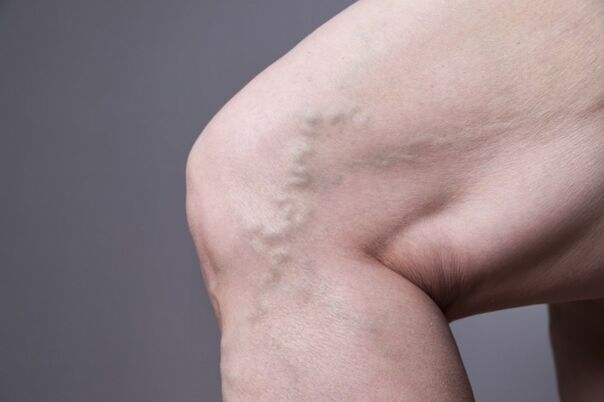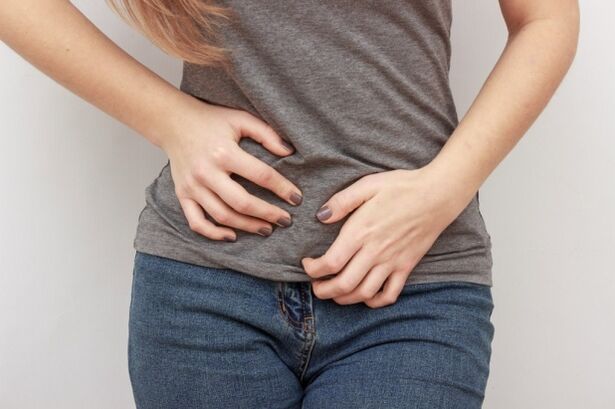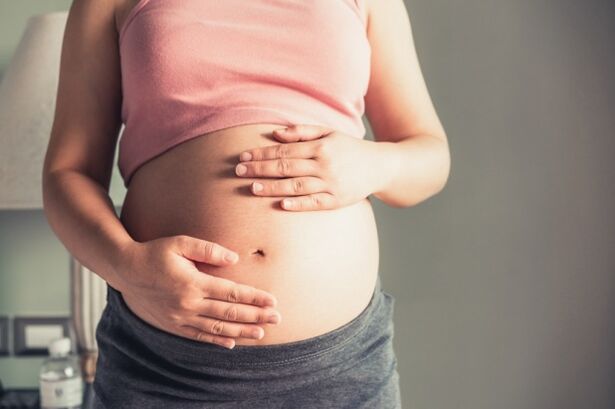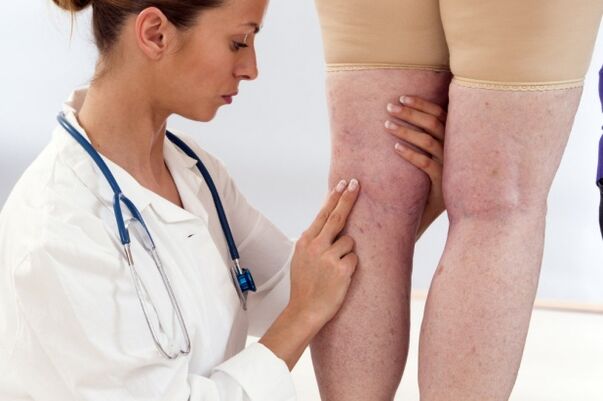Chronic venous insufficiency and varicose veins are widespread complaints: According to statistics, every third person is faced in industrialized countries.The special risk group includes representatives of fair sex, to which this pathology provides both physical and psychological complaints.In this article we will consider why vascular diseases occur in women, what are their signs and symptoms, which is to be done for the treatment and prevention of this disease.
Varicose veins: causes of varicose veins in women
According to statistical data, men suffer less likely to suffer from varicose veins than women whose vascular diseases occur 1.5 times more often.What caused the gender -specific characteristic of this pathology?

- Features of the hormonal background.During the monthly cycle, the hormonal background of the woman is subject to fluctuations, and during pregnancy, birth, lactation and menopause, these changes become even more important.The ratio of female sex hormones (estrogen and progesterone) affects the condition of the vascular walls and blood viscosity.
- Hormone therapy.Combined oral contraceptive reception of hormone therapy and taking the hormonal background, which changes the ratio of estrogen and progesterone in the body.
- Wear shoes in heels and tight pants.Unknown shoes, narrow underwear and jeans - all of this provokes a violation of the blood flow in the lower extremities and in the pool, which leads to the development of varicose veins.
In addition, exclusively female prerequisites for the development of pathology, varicose veins in women can provoke the following factors:
- Genetically determined predisposition.According to statistics, a tendency towards varicose veins is observed in 60% of cases when one of the parents suffers from this pathology.
- Significant overweight.Obesity is one of the factors for the occurrence of varicose veins because the lower limbs have increased pressure.
- Excessive load on the legs.If you are professionally engaged in running, jumping or powerlifting, favorable conditions are created for the development of problems with veins.
- Disorder of blood circulation by a fixed pose.If you sit or stand for most of the day, this is a serious prerequisite for the development of venous diseases.
- Unbalanced diet.A diet low in fiber, vitamins and microelements leads to disorders that affect the walls of blood vessels and the composition of the blood.In addition, an unbalanced diet can lead to constipation, which can also lead to changes in the veins - especially varicose veins of the pelvis.
- Diseases of the endocrine and cardiovascular system.Endocrine disorders lead to changes in the hormone level, which in turn become a prerequisite for the development of varicose veins.Cardiovascular diseases (in particular high blood pressure) also lead to the development of vein problems.

Varicose veins of the pelvis in women
A pathological expansion of the pelvic vessels is a common problem with which 15–25 % of women of childbearing age are faced.This disease is often confused with infectious and inflammatory processes that are localized in the reproductive organs of the female urogenital system.Due to an incorrect diagnosis, unsuitable treatment is prescribed and the patient does not receive any relief.Therefore, the problem of diagnosis and adequate treatment of pelvic varicose veins is an urgent problem of modern phlebology and gynecology.
The blood supply to the pelvic organs takes place via the uterine and ovary veins as well as via vein mesh- uterovaginal, vesicovaginal, pampiniform, rectal plexus etc. The cause of pelvic varicose veins in women is the disruption of blood flow in these vessels.The cause is usually in a bloodstream that can have the following causes:
- sitting lifestyle;
- previously suffered gynecological diseases suffered;
- hormonal imbalances (especially high estrogen levels);
- Pregnancy and birth history;
- Congenital and acquired connective tissue disorders (namely a lack of collagen).
Expert opinion The main symptom of this vein disease in women is the presence of a chronic pelvic pain syndrome.It manifests itself through pain in the lower abdomen that radiate into the pubic, the sacrum and the dam.
The highlight of the pain usually occurs in the second half of the menstrual cycle, supplemented by a severe pre -truly syndrome and dysmenorrhea.Psychosomatic disorders can go hand in hand with these symptoms.

As mentioned above, the diagnosis of pathology is difficult insofar as the symptoms of this venous disease in women can be incorrectly interpreted as signs of purely gynecological problems.In order to make the correct diagnosis, transvaginal ultrasound, Dopplerography and phlebography is required in some cases diagnostic laparoscopy.
Both a conservative and operational approach is used to treat varicose veins of a small pelvis.
In the first case, the purpose of the therapy is to increase the sound of the venous walls, the normalization of the nature of blood flow and blood viscosity.In order to solve these problems, patients are prescribed venotonics, causing hirudotherapy sessions, ultrasound and magnetic therapy as well as exercises for training therapy.If the conservative therapy of this disease of the pelvis is ineffective, surgical intervention is carried out - sclerosis or embolization with veins in pregnant women.
Problems with Vienna in pregnant women
Varicose veins are the problem of most pregnant women.It is due to the changes in the body of the expectant mother during pregnancy.During this time there is a complete restructuring of the hormonal background, which is directly related to the condition of the blood vessels.For example, the growth of estrogens leads to changes in the structure of the muscle layer of the venous walls and to extend blood vessels.

In addition to hormonal changes associated with the baby pregnancy and the birth of the baby, pregnancy and birth can provoke the development of venous diseases in pregnant women and for other reasons.First, it is an increase in body weight and the simultaneous growth of the load on the lower limbs as well as the excessive tension that the woman experiences in work during the contractions.
During pregnancy, an increase in the total volume of the circulating blood is observed, which occurs due to the growth of plasma and red blood cells.
Venus diseases in women: symptoms and signs
Depending on the development stage, varicose veins manifest themselves on the legs in different ways:
- The initial phase of the pathological process is easy not to notice because its manifestations are usually minimal.Small vascular stars appear on the legs, in the evening there is a little feeling of the symptoms, until the end of the day it can easily swell.Even if the clinical image described does not cause much fear as soon as you have the named symptoms, it is recommended to consult a doctor.
- If the disease was not found in the early stages and the treatment was not started in time, veins are tightened with veins in women.The venous grille is becoming more and more pronounced, the characteristic nodes and grain are clearly distinguishable under the skin, swelling and a feeling of bursting in the lower extremities, serious symptoms cause complaints.
- If the disease has not been treated or treated inefficiently, it becomes a neglected form.The affected veins are highly highlighted under the skin, there are constant edema, cramps occur at night, the skin in the area of the legs can change the color and covered with trophic ulcers.
Venus diseases in women: treatment
Two main areas for solving this problem are differentiated: conservative and surgical.The first of them are usually used in the early stages of the development of pathology, during the second justified to combat later stages of the disease.

Conservative therapy includes taking medication, using agents for external use, visiting physiotherapy sessions, wearing compression knitting clothes, correction of physical exertion, daily routine, nutrition and drinking regime.You can also use additional tools to combat varicose veins - for example Norman® Legs Cream.The regular use on the lower limbs helps to get rid of swelling, tiredness, severity and symptoms in the legs, the disappearance of nightly seizures and a decrease in the expressions of the vascular pattern.
Due to the natural composition, the cream can be used during pregnancy.
The surgical intervention aims at full or partly removal of varicose veins.Modern vascular surgery can offer the following types of operations:
- Combined phlebectomy.
- Laser coagulation.
- Radio frequency coagulation.
- Sclerosis.
When we talk about the treatment of venous diseases in women from 50 to 60 years and in patients of older people, the surgical intervention is usually not carried out, as this is a stress for the body.

























